Keys To Deploying A Successful Internet Banking Service
White Paper
May 1999
Samir Mehta
smehta@broadvision.com
BroadVision
585 Broadway
Redwood City, CA 94306
650-261-5923
Introduction
As banks seek to take advantage of the low cost and ubiquity of the Internet for competitive advantage, they must remember that the customer is king. In this white paper, we will show you how to rapidly deploy the Internet as an electronic channel to conduct business, and how you can make the Internet an interactive channel to develop, broaden, and manage one-to-one customer relationships. This white paper will illustrate how BroadVision's end-to-end Internet banking solution will allow you to meet your objectives of deploying a successful Internet banking service to your customers.
I. The Drive to Internet Banking
The banking industry is undergoing tremendous change. Deregulation, globalization, new entrants, disintermediation, and explosion of new products and services enabled by technology are changing the face of financial services like never before. Banks are buying other banks, brokerages, and mutual fund companies.
In the US, the top 20 banks control almost 60 percent of the assets. Ten years ago, it would have taken the top 50 banks to control the same percentage. Due to the gradual removal of the Glass Stegall act and the move to deregulation, the lines between banking, brokerage, and insurance are blurring.
It is important to understand the following business drivers of change in the financial services industry to understand the drive toward Internet banking:
- The Powerful Consumer - Consumers for the first time have easy access to information that was only available to professionals on Wall Street. They are using this information to make better, more-informed decisions. They are demanding more choice and the ability to serve themselves. The power has shifted from the institution to the consumer. This is resulting in several things; such as firms that offer choices are succeeding at the expense of more traditional banks and institutions. Declining brand loyalty is another result. Customers increasingly view bank accounts and credit cards as commodities and are willing and able to switch to other financial service providers offering lower fees or better rates.
- Valuing Services Beyond Products - In a world of commodity products and many choices, consumers are turning increasingly to financial planners and consultants for providing advice and service. Firms that provide services such as consultative selling and service (such as Merrill Lynch) are able to differentiate themselves from their competitors and will continue to grow in popularity.
- Increasing Fragmentation and Population Diversity - In a commoditized world where products are undifferentiated, it is the marketing that is more differentiated. One-to-one sales and marketing are essential today where mass marketing messages are increasingly less eeeffective. For example, in the US, the effective. For example, in the U.S., the population is becoming more diverse increasing the need for one-to-one marketing. Trends toward micro-marketing and micro-segmentation have proven successful with credit card issuers.
- New "Rules of the Game" - The decline of the branch as a delivery channel in retail financial services has changed the rules of the game. Less than half of all US consumers designate the branch as their preferred channel. In the UK, 27 percent of all adults would consider changing bank accounts to get PC access (source: ICL/MORI survey, 1996). The dollar volume of electronic consumer purchases grew at a 27 percent annual rate from 1988 to 1995. Use of electronic delivery channels will continue to increase.
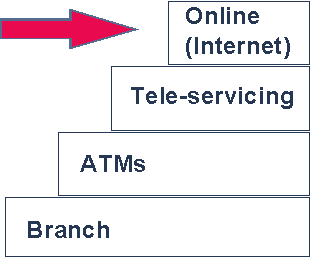
Figure 1. Evolution of Electronic On-line Banking Delivery Channels
Recent studies indicate that consumers will conduct financial services over the Internet in rapidly increasing numbers, particularly in the segments of banking, brokerage, and mutual funds. Analysts forecast widespread adoption of Internet banking in the US. Here are some of the forecasts:
- SVP estimates that banking on-line in the US will grow to 16.9 million households by 2002. More than 25 percent of PC users who are aware that their bank offers on-line banking are using it.
- According to a Booz, Allen, & Hamilton study, over 16million U.S. households will be banking over the Internet by the year 2000. They predict the Internet banking market will grow 145 percent annually over the next 4 years. The study also predicts that 30 percent of retail banking profits will come from the Internet channel by the year 2000. Thirty percent of the biggest banks will offer on-line transaction capabilities versus only 15 percent of the top insurance firms.
- Forrester Research estimates that 1 in 10 U.S. households will do banking on-line by 2000. They forecast that the number of on-line investment accounts in the United States will grow from 1.5 million to more than 10 million by the year 2001. They predict a new breed of mid-tier brokers offering lower commissions and advice on how to use on-line tools will eventually occupy the largest niche.
- Between 10 and 15 percent of Quick & Reilly's accounts are already electronic-based, and they predict that more than half will be by the year 2000.
- Of an estimated 500,000 Internet users in Switzerland, as many as 33 percent of them are expected to become Internet banking customers (source: Credit Suisse).
II. Benefits of Internet Banking
Internet banking benefits banks in a number of ways:
- Acquire Competitors' Customers. Large banks are seeking to acquire new customers and can target their competitors' best customers through Internet banking.
- Reduce Transaction Costs. (see Figure2) Cost reduction translates into higher profitability.
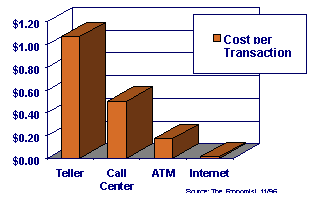
Figure 2. Cost Comparison of Transaction Through Different Banking Channels
- Improve Customer Retention. Banks have discovered that the higher the number of banking relationships that customers have with their bank, the less likely they are to switch to a competing institution.
- Capture A Larger Share of the Customer's Wallet. Personal financial management software (such as Quicken) allows individuals to consolidate their financial information in one place. Banks have the potential to cross-sell other financial products such as mutual funds because the customers already have a checking or savings account.
- Target the Profitable Customers. Customers who conduct Internet banking have net worth and account balances significantly higher on average than a bank's typical branch banking customer.
The Wells Fargo Experience
Alan Stark, former Vice President of Wells Fargo's on-line banking service, provides the following reasons why the Internet is a key bank distribution channel:
- Provides added convenience and financial control for high-value customers.
- Targets cross-selling
- Attracts new customers and increases customer retention.
- Provides lowest cost delivery channel
- Expands market reach without "bricks and mortar."
Before Wells Fargo offered Internet banking, their proprietary PC banking service attracted only 25,000 customers in 24 months. The Internet banking service has grown 80 fold and has attracted 700,000 customers since May 1995. The incremental value of the Internet banking customers has doubled for the bank (for example, these customers have double the balance of their average customer).
Wells Fargo is one of the leaders in Internet banking. They enable their retail customers to conduct a wide range of services over the Internet including:
- View current balances on their checking, savings, and credit card accounts.
- Transfer funds between their checking, savings, and credit card accounts.
- Pay their credit card bill by transferring money from their checking or savings account.
- Get a cash advance from their credit account.
- See which checks cleared and which deposits and withdrawals were posted in the past 45 days.
- Examine their credit card charges and payments
- Pay bills.
- Download their account's transaction information to Quicken or Money.
- Request service transactions such as setting up an automatic savings plan and changing their addresses.
III. Internet Banking Services that Banks Plan To Offer
A survey conducted of 30 North American financial institutions by Global Concepts found the following set of services that institutions offer. Most institutions had not yet offered any interactive services. This list is in priority order:
1. Credit card applications 74%
2. Bill payment 67%
3. Loan applications 67%
4. DDA balance and inquiry 66%
5. Transactions between accounts 62%
6. Report lost or stolen checks 58%
7. Close a DDA 56%
8. Report lost or stolen credit cards 52%
9. Purchase CDs 48%
10. Open DDA 46%
11. Stop payment 46%
12. Transactions between multiple customer accounts 42%
13. Brokerage account inquiries 42%
14. Open brokerage account 38%
15. Open mutual fund accounts 37%
16. Close brokerage account 29%
17. Buy, sell, trade stocks 28%
18. Close mutual funds account 28%
19. Check images on-line 28%
20. Buy, sell, trade mutual Funds 25%
The Yankee Group summarizes consumers' usage and interest into the following areas (in priority order):
- Bank services (account inquiry, fund transfers)
- Bill payment
- Information on bank products
- Investment information
- On-line trading applications
IV. BroadVision: The Premier Internet Banking Solution Provider
"We had one objective with the Internet Banking Service: to increase customer loyalty," said Jorge Mata, former head of multimedia banking at Banco Santander, Spain's most profitable bank. "Even more valuable than BroadVision's proven, industrial strength Internet commerce capabilities were the dynamic personalization features that allow us to actually learn from our customers and offer them the services and products that they required."
This quote summarizes the business benefits that BroadVision's One-To-One financial solution is delivering to leading global financial institutions such as Banco Santander, Spain's most profitable bank with $150bn. in assets worldwide. BroadVision is enabling banks globally to meet their Internet banking objectives. Here is a sample of the impressive results BroadVision's financial services clients are producing:
- A leading European bank was able to offer Internet banking to its customers in less than two months from start to launch. This rapid time to market also provided significant cost savings in development and maintenance of hundreds of thousands of dollars. In the first fifteen 15 days of operation, they registered almost 5,000 Internet banking customers. Their transaction volume exceeds 15,000 transactions each day, more than at any single branch. They launched offering 32 different types of on-line banking transactions from the start.
- Banco Santander has over 60,000 Internet banking customers. This greatly exceeded their initial forecasts. They have been able to roll out new services every two weeks to their customers.
- Liberty Financial, a diversified $48 billion asset management firm in the U.S., rapidly deployed an Internet fund management service for its Steinroe mutual fund company. They also deployed an extranet site to their insurance agents of their Keyport Life Insurance company. Liberty has implemented an environment for secure transactions and advanced personalization services called LEAPS for all its web businesses. In doing so, they also achieved the following significant milestones:
- First consumer use of digital certificates
- First company with full mutual fund transaction capabilities on the Internet
- First insurance company to allow secure Internet access to independent agents and brokers
- First mutual fund web site to offer a portfolio management application that can
track outside investments
V. End-to-End Solution
Objectives
There are three basic objectives for a One-To-One Financial enabled bank:
- Increasing sales of financial products by providing tools and information to optimize the sales cycle.
- Retaining assets within the bank by providing customers value-added information about their finances. (for example, retaining assets through customer loyalty.)
- Reducing the bank's operational costs (telephone servicing and mail distribution) by providing on-line delivery of information.
One-To-One Financial gives the bank the potential of offering a wide range of financial and educational tools and services to differentiate itself from its competitors. Integration with One-To-One Financial offers the potential for customizing services to the bank's customers in a manner beyond that achievable with any other product.
Deploying a successful Internet banking service requires the following:
- A roadmap for Internet banking - If you don't know where you are going, you won't get there.
- A total solution life cycle approach
- A complete set of solution components that encompasses the application, security, infrastructure, and legacy integration.
- A strategy and plan for developing and managing customer relationships.
Internet Banking Road Map
BroadVision offers banks a unique road map to Internet banking today and in the future. This road map starts with enabling banks to rapidly deploy an Internet banking service that allows customers to conduct secure transactions over the Internet. This is where other software and solution providers' road maps end.
BroadVision's roadmap offers banks a path to a bright and profitable on-line future. This further enables banks to increase customer retention by establishing an interactive relationship with each individual customer, execute on-line marketing strategies for cross-selling and up-selling, and dynamically responding to changing customer needs and feedback.
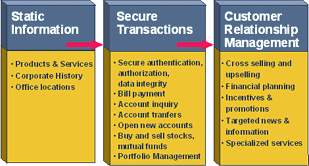
Figure 3. The BroadVision Internet Banking Road Map
Solution Life Cycle
BroadVision's on-line expertise comes from working with over 300 customers in all parts of the world over the past 6 years. Over 150 Internet sites are in production conducting business on the Internet based upon BroadVision's solutions. BroadVision's financial services customers include asset management firms, brokerages, banks, credit card issuers, commercial and investment banks.
This wealth of experience combines software, services, and a proven nine-step solution methodology that spans the phases of strategy, implementation, and operations. (see Figure 4)
The strategy phase covers the initial three steps:
- Strategic Planning - Determining the business requirements for the on-line service.
- Conceptual Storyboarding - Determining the customer segments and on-line marketing strategies.
- Project Planning - Determining the project scope, resource planning, and project timeline.
The implementation phase covers the middle steps:
- Content Development - Generating and classifying the content for distribution on the site.
- Application Development - Designing and developing the application architecture, application customizing, and testing.
- Systems Integration - Providing integration services with the bank's legacy systems, data feeds, network, middleware, and security architecture.
The operations phase covers the final steps:
- Technical Operations - Providing web hosting, system administration, and management reporting services.
- Business Operations - Providing outsourcing and operations consulting services.
- Business Evaluation - Providing business audit and process improvement consulting services.
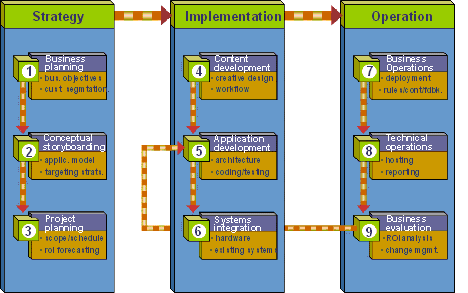
Figure 4. BroadVision's Nine-Step Solutions Methodology
BroadVision's Professional Services Organization combines strategic services, content services, application development, and systems integration. This comprehensive set of services enables leading banks to successfully offer Internet banking services in record time. BroadVision's professional services organization works closely with best-in-class consulting partners to guide banks through every step of the solution life cycle.
Solution Components
Identifying the complete set of solution components is the first step in designing an Internet banking service. Here is a checklist of products and technologies that may be required to deploy a successful Internet banking service.
- Internet Banking Application
- Security
- Infrastructure and Legacy Integration
BroadVision provides software and professional services and works with best-in-class partners to deliver an end-to-end Internet banking solution.
Internet Banking Application
BroadVision's One-To-One Financial Application offers a complete application solution for Internet banking. A comprehensive view of the interactive on-line banking relationship is provided from the moment the customer logs into the Internet banking service until the customer terminates the session. There are four stages to each on-line banking interaction between the bank and its customer:
- Customer Profiling - Observing what the customer is doing, learning about their needs and preferences, and retaining a record of this valuable interaction for future analysis and use. Customer profiles can be leveraged from existing customer information in legacy systems and databases.
- Content Management - A full set of content such as advertisements, articles, editorials, forms, news feeds, promotions, and research reports that customers can view. Content is classified so that it can be matched to user preferences.
- Matching - Serving targeted content for the different customer segments, conducting cross-selling and up-selling campaigns, promotions, and incentives. Marketing campaigns can be created and managed on-line by nontechnical business and product managers.
- Transactions - Customers conduct their banking transactions securely and in real-time.
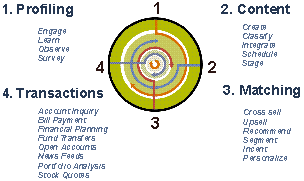
Figure 5. Life Cycle of an Internet Banking Interaction
BroadVision's One-To-One Financial Application enables banks to meet and exceed their Internet banking objectives by:
- Offering customers their own personal on-line branch where they can serve themselves. Customers can perform the same common set of services they conduct through other channels: see their current account balances, review their transaction history, transfer funds, track their stock portfolio, and manage their overall portfolios.
- Offering customers unique value-added services that are too costly or not possible through other channels. For example, customers can set alerts that enable them to be immediately notified by email, web, fax, or pager about important account, portfolio, and market conditions they want to monitor.
- Increasing customer retention and loyalty by offering value-added services tailored to customers' needs.
- Increasing cross-selling and up-selling by dynamically matching their customers' needs with the appropriate financial products and services.
- Increasing customer satisfaction with around-the-clock, personalized customer service that simplifies finding information and encourages customers to help themselves.
- Learning more rapidly and effectively about customer needs and preferences by observing customer interactions and gathering customer feedback on-line.
- Lowering transaction costs by shifting transactions from higher-cost business channels, such as branch offices, to the low-cost Internet channel.
- Preserving and leveraging capital investments made in legacy business systems by integrating them with new Internet services.
Security
Security continues to be the number one concern of banks in offering banking transactions over the Internet. There are four key components to Internet security.
- Authentication - The ability to verify that the customer conducting banking transactions on-line is who they claim to be. BroadVision supports a variety of well-established methods of secure authentication:
- Login and password
- Cookies
- Digital certificates. Liberty Financial, a BroadVision customer, was the first to use digital certificates with consumers to authenticate their 1.5 million Steinroe mutual fund shareholders.
- Data Integrity - Ensuring that information transmitted between the customer and the bank is tamper proof so no one else can read or modify the information. Encyrption such as SSL is used for ensuring data integrity and privacy.
- Perimeter Security - Firewalls are commonly used to control access to a bank's intranet or corporate network so intruders cannot gain access to valuable financial and corporate data.
- Data Encryption - Additional security such as encryption of customer data and passwords.
BroadVision's security architecture integrates the leading Internet security products and technologies to deliver the highest level of security possible.
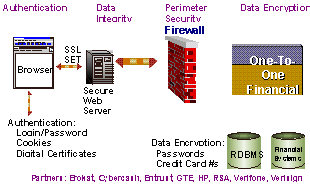
Figure 6. BroadVision's Security Architecture and Partners
Infrastructure and Legacy Integration
The greatest effort in implementing an Internet banking service is integrating with the bank's existing infrastructure. This includes market data feeds, data marts and warehouses, legacy systems, and possibly, third-party data sources. An application must have an architecture that allows for rapid integration with all data sources.
BroadVision uses the Common Object Request Broker Architecture, CORBA, as the standards based architecture to provide the foundation for distributed object computing in an enterprise-wide infrastructure. By using CORBA, BroadVision's software architecture provides the scalability and growth path banks are looking for in designing an Internet banking service. As the number of on-line customers grows and their needs increase, banks can simply add more application servers and database servers to handle the growth in demand. The
One-To-One Financial Application has proven it can meet the scalability and performance requirements of the most demanding banks in the world.
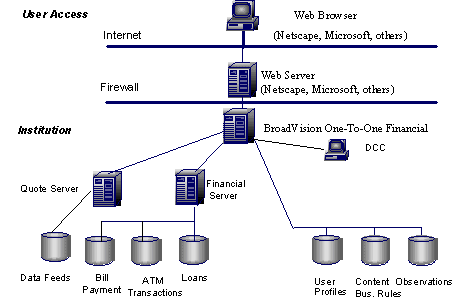
Figure 7. BroadVision's Internet Banking Application Architecture
BroadVision's methodology for integrating with legacy systems is based upon a set of general principles and expertise gained through real-world integration projects with our customers. Integration with backend mainframe systems is through an open adapter called a financial CORBA server. A comprehensive set of APIs has been defined on this server (for example, user login on host, get account lists, get account transactions, and so on). The implementation of these APIs will interface with legacy systems. This can be done through the following methods:
- SNA communication programs - Products from third party vendors can be linked with the financial server. These products basically takes care of mainframe connectivity (LU0 or LU6.2) and work on input and output messages. The format of the message is, of course, determined by the host application. In this scenario, the Financial Server is responsible for message construction and parsing.
- Other 3rd party products such as IBM MQSeries and BEA's Tuxedo - These middleware products take care of the connectivity and provide libraries that can be integrated with the Financial Server. Some of these systems hide the message construction and parsing so that it becomes easier to integrate.
So, in either scenario, there is a set of financial dynamic objects that do specific things (for example, look up user accounts, account details, and so on) by calling the appropriate APIs on the financial server. The API implementation, in turn, calls the appropriate mainframe connectivity library (SNAlink, for example) that passes the message along, and returns the output message from the host. This information is passed back to the dynamic objects which then print the appropriate fields on the HTML page.
At a leading Asian bank, legacy integration consisted of a financial CORBA server that serves as the gateway between One?To?One Financial and the mainframe. The distributed nature of the systems provides for having multiple Financial CORBA servers connected to multiple legacy systems.
VI. Developing and Maintaining Customer Relationships
"The real potential is to deepen and augment customer relationships."
- Jeffrey Rayport, Professor, Harvard Business School
Once the Internet banking service has been launched and customers are conducting secure transactions on-line, this is where banks can truly begin to take full advantage of the Internet channel for developing deeper customer relationships. Retaining profitable customers is as important as, if not more important than, attracting new customers. They are the lifeblood of all successful banking institutions.
Banking and financial services are very personal. Customer needs vary a great deal from person to person and from household to household. As a result, the relationship between a bank and each of its customers has always been one-to-one. Here we describe the principles and strategies of developing one-to-one relationships with on-line banking customers.
One-To-One Financial Customer Relationship Principles
1. Need to Value Continuum
All customers have diverse banking needs, and each of them represents a unique value (for example, profitability) to the bank. The key is to focus efforts on those customers providing the highest or steepest value to the bank, and to focus those efforts through the customers' unique needs. (see Figure 8)
It is important to understand how customers compare in terms of their expected profitability to the bank on a customer-by-customer basis, and to leverage these differences through the products and services offered individual customers. The following diagram highlights the fact that
banks have the greatest need for one-to-one marketing and customer relationships due to the steep customer values and diverse customer needs.

Figure 8. Need to Value Continuum
2. Customer Loyalty
Providing customized products and services requires differentiating customers according to their individual needs. The bank achieves customer loyalty - and by implication, profit margin - through service and by catering to customers' individual needs.
Customer loyalty is best built by having customers rely on the convenience of dealing with a bank that remembers and treats them as individuals. The industry average indicates it is 10 times less expensive to do business with an existing customer than with a new customer.
The longer a customer remains, the more valuable that customer becomes. Repeat customers buy more, are less sensitive to prices, take less of the company's time, and bring in new customers. (Harvard Business Review, March/April 1996)
The more a bank knows about its customers, the less the customers need to educate the bank about their needs and preferences. This results in increased convenience to the customers. As the customers' convenience increases, so do their loyalty and satisfaction.
3. Learning
The opportunity for the bank is to make transactions convenient for its customers by learning from their behavior and remembering the patterns of each customer's typical interactions with the bank. For example, if a customer typically uses the on-line service to check the status of checks written or bills due for payment, a bank-customer dialogue might automatically begin with: "Good morning, Mr. Smith, the following checks have cleared and the following bills are now due for electronic payment …"
4. Mass Customization Leads to Differentiation
Customizing the banks services in this manner increases the irreplaceable value the bank provides to its customers, increasing, as a consequence, their loyalty and value to the bank's business.
This enables the bank to differentiate itself from its competitors not by cutting profit margins, but by differentiating through customization and service.
It should be noted that all products can be customized. Even commodity products can be customized by varying packaging, ancillary services associated with the product, delivery times, and billing schedules.
To create an increasingly customized and high-quality relationship with the customer, successful on-line banks must concentrate on enabling their customers to perform more and more banking operations themselves. In reality, this is what occurred when customers began customizing banking transactions themselves through the use of ATMs rather than human tellers.
The bank will be able to participate in the process of "mass customization." Mass customization through the use of technology will ultimately provide a less-expensive and more-profitable way of servicing banking customers, and customers in every other industry, than through the one-size-fits-all approach.
VII. Sample Internet Banking Application Services
Here is a sampling of what a bank may choose to offer its Internet banking customers:
- Financial planning tools such as a Java applet to calculate mortgage payments based on a certain principal and interest rate. This gives the customer a range of ready, convenient financial planning applications and allows the bank to "observe," through One-To-One Financial's Observation system which customers might be considering financing a home.
- Financial news relevant to the customer's financial holdings: "Your Company Announces Quarterly Earnings" article is fed directly to customers with stock holdings in the company.
- Customized marketing and sales messages to customers. For example, customers who have calculated what their mortgage payment may be on a home might get a promotion from a realtor operating in their area.
- Educational information relating to investing in the stock market or retirement planning.
- Information that enables a customer to research the differences between term life insurance and whole-life. One-To-One Financial can lead the bank to offer the customer a favorable insurance plan based on the wealth of information already known about the customer.
- On-line investors' clubs that bring together a virtual community of people with a common interest. For example, a married man with children might want to know if the majority of males in his circumstance purchase term life insurance and invest in mutual funds rather than bonds.
- Financial planning functions that allow customers to create an asset allocation strategy, set up college funds for their children, and set up a retirement plan.
- On-line credit card applications
- Apply for a home mortgage and see current mortgage rates.
- Electronic bill payment, bill status, and payment activity
- Check status, on-line images of cleared checks
- On-line customer feedback allowing customers to rate the services and products offered by the bank
VII. Summary
The industry is driving Internet banking full-speed ahead. There is an enormous opportunity to gain significant competitive advantage by embracing it. Alternatively, your competitors can easily jump ahead and capture marketshare. To be prepared to lead your company to take advantage of this new frontier, consider the following questions:
- Do you have a road map for Internet banking today and in the future?
- Have you identified all the key steps to take from planning to launch?
- Have you identified the complete set of solution components you need to deploy Internet banking?
- Do you know how to optimize the Internet as an electronic banking channel and a customer interaction channel?
Working with BroadVision will allow you to answer "Yes" to all of these key questions. BroadVision's One-To-One Financial Application will enable you to:
- Offer customers their own personal on-line branch where they can serve themselves.
- Offer customers unique value-added services that are too costly or not possible through other channels. For example, customers can set alerts that enable them to be immediately notified by email, web, fax, or pager about important account, portfolio, and market conditions they want to monitor.
- Increase customer retention and loyalty by offering value-added services tailored to customers' needs.
- Increase cross-selling and up-selling by dynamically matching their customers' needs with the appropriate financial products and services.
- Increase customer satisfaction with around-the-clock, personalized customer service that simplifies finding information and encourages customers to help themselves.
- Learn more rapidly and effectively about customer needs and preferences by observing customer interactions and gathering customer feedback on-line.
- Lower transaction costs by shifting transactions from higher cost business channels, such as branch offices, to the low-cost Internet channel.
- Preserve and leverage capital investments made in legacy business systems by integrating them with new Internet services.
BroadVision is uniquely positioned to help you successfully deploy an Internet banking service that customers are demanding for today and lay the foundation for a bright and profitable on-line future.